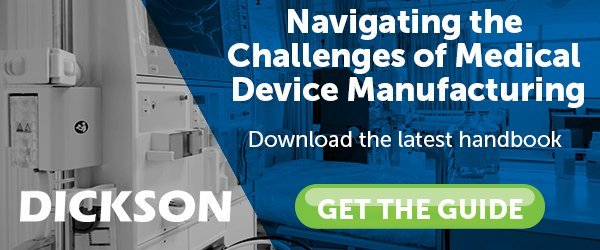Success in the medical device industry requires more than just creating a good product – you must meet regulatory standards for your device to make a difference. That’s why when designing, building, or selling medical devices, it’s important to know and understand the FDA’s classification of your device. This will determine what type of pre-marketing submission/application the FDA will require you to have before allowing you to go to market. Not properly preparing for the regulations and requirements the FDA will have on your device can mean the difference between a successful product and a costly failure.
There are three main types of medical device classifications that the FDA uses: Class I, Class II, and Class III. The FDA considers multiple factors when classifying a device, including:
- The level of risk that’s associated with the device
- How complex the device is
- Whether or not the device is surgically invasive
- The materials that the device is made from (and their interactions with the body)
- Whether the device is active or surgically implantable
- Whether the device is integrated with other medicines (and what those medicines are)
- How long the device is meant to be used for
Once the FDA gathers this information, your device will go in one of the three classes:
|
Class |
Risk Level |
Explanation |
% of Market |
Example |
|
Class I |
low to moderate |
Simpler in design; device is not life-supporting or life-sustaining and does not present a reasonable source of injury through normal usage |
47% |
Stethoscope, elastic bandage, bedpan |
|
Class II |
Moderate to high |
Most medical devices on the market are class II |
43% |
Powered wheelchair, x-ray machine, suture material |
|
Class III |
High |
Usually sustain or support life, are implanted, or present potential unreasonable risk of illness or injury |
10% |
Pacemaker |
Class I devices are determined to have the lowest risk associated with them out of all medical devices. This means that they are put underneath the least scrutiny and are only required to comply with the lowest level of regulatory control. Often simpler in design, these devices will be able to go to market the fastest and will have quicker turnaround times for FDA approval.
Class II devices are thought to be more complicated and at a slightly higher level of risk than Class I devices. This means that the FDA’s regulatory grip will tighten a bit more on these devices, putting them under stricter regulations in order to back up their safety and effectiveness. The road to FDA approval will be more difficult than with Class I devices and turnaround times will be longer, but Class II devices will face far less criticism than when compared with Class III devices.
Class III devices are considered to be the most complex out of the three categories. As such, they are seen as having the highest risk. Their high-risk status means that they’ll undergo the most stringent regulatory tests and be held to the harshest standards. Expect the longest turnaround times for Class III devices.
Securing Your Device’s Success
No matter what class your device falls under, consistent environmental monitoring will go a long way in helping you to maintain compliance and push out a successful product in a reasonable time frame. Choosing the right environmental monitoring system means you recognize that safety and the quality of your products is of the utmost importance.
From making sure work environments are kept sterile to ensuring the accuracy of diagnostic tools, environmental monitoring systems can help you make sure that you maintain a consistent production environment. That way, your products will operate how you need them to. Every time. Uniform system and product performance are the only way to ensure that you meet all of the class-imposed regulations that the FDA puts on you.
At Dickson, we specialize in industry-leading environmental monitoring and guaranteeing the performance of our client’s products. Our environmental monitoring solutions will help you to ensure regulatory compliance, audit performance, and consistent product quality so that your products, and profit, stay up.

